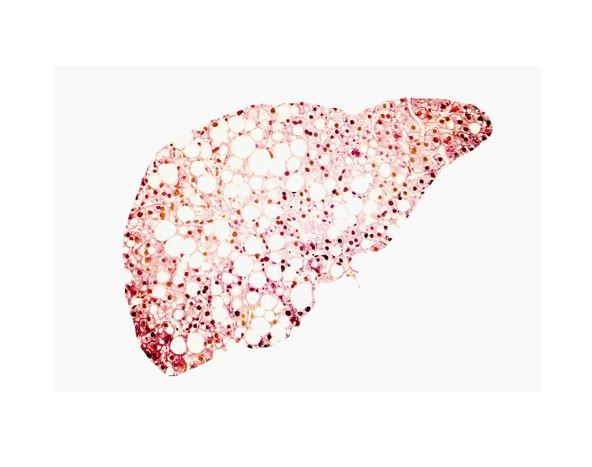Hepatic Steatosis is a Risk Factor for MACE, Even Among Individuals at Low 10-Year ASCVD Risk
TLM 2023: The burden of CAD is similar between persons with hepatic steatosis at low and high ASCVD risk, but rate of MACE is higher in the low-risk population.
Hepatic steatosis (HS) may increase the risk of major adverse cardiovascular events (MACE) even among individuals whose 10-year atherosclerotic CV disease (ASCVD) risk is low, according to study findings presented at The Liver Meeting 2023, November 10-14, 2023, in Boston, MA.
Specifically, researchers from Massachusetts General Hospital and the Duke Clinical Research Institute found that the severity and burden of coronary artery disease (CAD) was similar between adults with and without HS and ASCVD risk scores <7.5% but that the rates of MACE among individuals with HS and ASCVD risk scores <7.5% were similar to rates observed in those at ASCVD risk of ≥7.5%, according to the study abstract.
©Kateryna_Kon/stock.adobe.com

The rationale for the research, according to the authors, is that while the increased risk of future CV events in adults with HS and 10-year ASCVD risk of 7.5% or greater is well recognized, the impact on MACE of HS in persons with risk <7.5% is poorly understood.
The cohort for their investigation was drawn from adults who participated in the 2015 PROMISE trial, a population with suspected stable angina, no history of CAD and that had undergone coronary CT imaging. The team used coronary CT data sets to define HS, coronary artery calcium (CAC) score, obstructive CAD (stenosis 50% or greater), and vulnerable plaques. For the study, MACE was defined as hospitalization for unstable angina, non-fatal myocardial infarction, and all-cause death. To determine whether HS was independently associated with MACE among participants with 10-year ASCVD risk <7.5%, researchers used multivariable Cox regression to adjust for coronary artery calcium (CAC) score, obstructive CAD and vulnerable plaques.
Results
Among study participants with 10-year ASCVD risk <7.5%, individuals with HS compared with those without HS were:
- Younger (54.3±5.2 vs 55.8±5.2; P<.001)
- More likely to be men (40.2% vs 27.1%; P<.001),
- Had more risk factors (mean 2.06 vs 1.93; P=.047)
- Had higher triglycerides (138.0 vs 115.0 mg/dL; P=.014)
- Had higher alanine transaminase (30.0 vs 19.0 mg/dL; P<.001)
These characteristics differed in similar measure among individuals with ASCVD risk of ≥7.5% both with and without HS.
The investigators reported no differences in CAD characteristics between patients with and without HS independent of ASCVD risk (CAC, obstructive CAD, vulnerable plaques, all P>.05).
The rate of MACE was higher among those with HS compared to those without HS in both the ASCVD risk <7.5% (1.5% vs 3.75%; P=.027) and ASCVD ≥7.5% (3.1% vs 4.7%;P=.043) groups.
In the group of individuals without HS, the rate of MACE was higher among those with ASCVD risk ≥7.5% compared to those in the lower ASCVD <7.5% risk group (3.1% vs 1.5%; P=.011).
Among individuals with HS, rates of MACE were similar for the group with ASCVD risk ≥7.5% (4.7%) and those with ASCVD risk <7.5% (3.7%) (P=.484).
The cumulative event rate, according to the study abstract, was significantly lower for patients without HS and 10-year ASCVD risk <7.5% compared to the other groups.
The investigators found that in patients with ASCVD risk <7.5%, the presence of HS was an independent predictor of MACE (adjusted hazard ratio, 2.34, 95%CI, 1.01-5.43; P=.048), regardless of CAD characteristics.
They concluded: “Individuals with radiographic HS and <7.5% ASCVD risk have similar CAD severity and burden as patients without HS at <7.5% ASCVD but experience similar MACE rates as individuals at ≥7.5% ASCVD risk.”